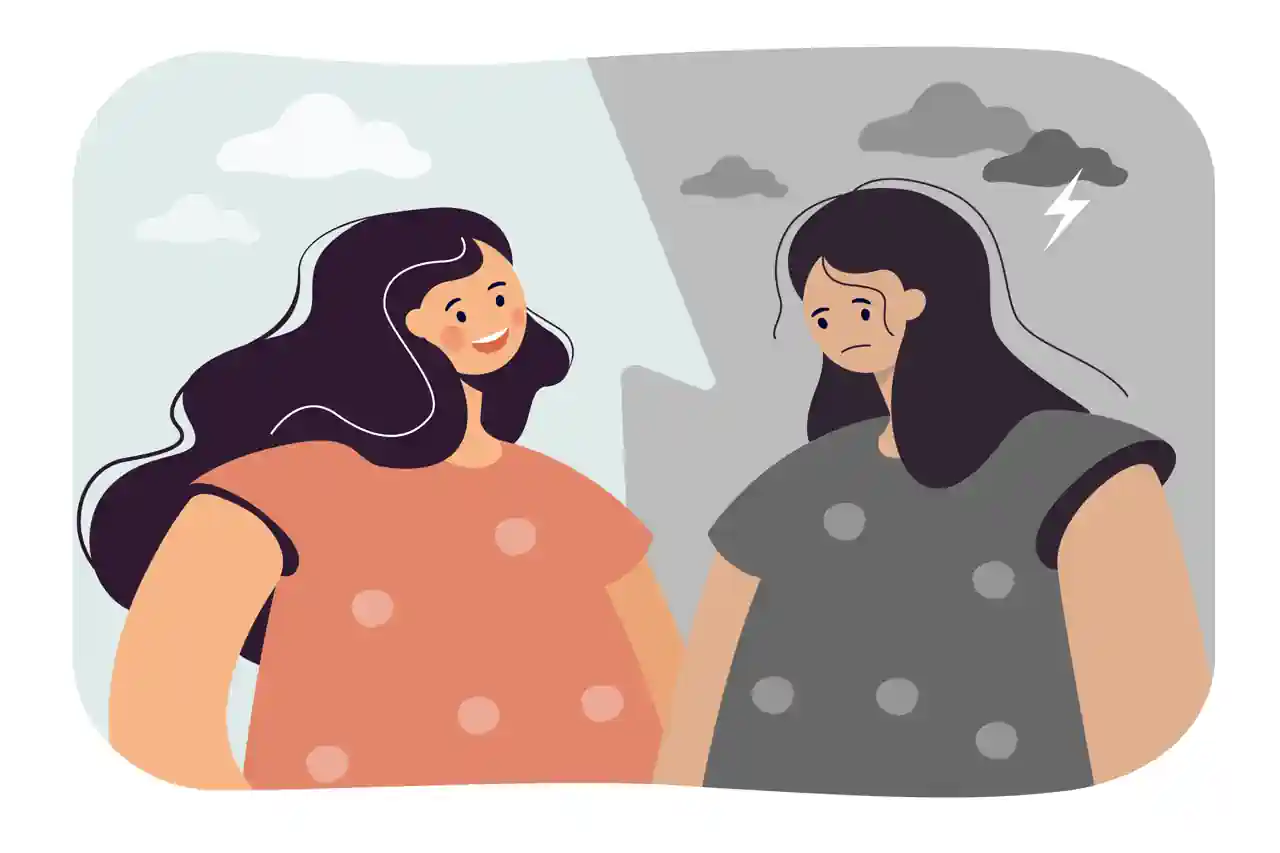As the days grow shorter and colder during the winter months, many of us may experience changes in our mood and energy levels. For some individuals, these seasonal shifts in emotions can be more severe and persistent, leading to a condition known as Seasonal Affective Disorder (SAD). In this article, we will explore what SAD is, its common symptoms, and provide practical coping strategies to help manage winter depression.
Understanding Seasonal Affective Disorder (SAD)
Seasonal Affective Disorder (SAD) is a subtype of depression characterized by recurrent episodes of depression that occur at specific times of the year, typically during the fall and winter months. It is important to differentiate SAD from other forms of depression because its onset and remission are linked to seasonal changes in light exposure.
Here are some key aspects to understand about SAD:
- Seasonal Patterns: SAD typically follows a predictable pattern, with symptoms emerging in the late fall or early winter and improving or remitting in the spring or early summer. Some individuals may experience a less common form of SAD known as “summer SAD,” where symptoms occur in the warmer months.
- Light and Biological Clock: One of the leading theories behind SAD is the disruption of the body’s biological clock, or circadian rhythm, due to reduced exposure to natural light during the shorter days of winter. The decreased sunlight can lead to alterations in the production of hormones and neurotransmitters involved in mood regulation.
- Prevalence: SAD is more common in regions with distinct seasonal changes, such as higher latitudes where winters are characterized by shorter daylight hours. It is estimated that about 5% of the U.S. population experiences SAD, with higher rates in northern states.
- Diagnosis: To diagnose SAD, healthcare professionals typically look for a pattern of depressive symptoms occurring at specific times of the year, for at least two consecutive years, without any non-seasonal depressive episodes. It’s important to rule out other medical and psychiatric conditions that may present with similar symptoms.
- Risk Factors: Certain factors may increase the risk of developing SAD, including a family history of depression, a personal history of depression or bipolar disorder, gender (SAD is more common in women), and age (it often begins in young adulthood).
It’s important to note that SAD is a real and treatable condition. If you or someone you know is experiencing symptoms of SAD, seeking help from a healthcare provider is crucial. Proper diagnosis and treatment can significantly improve quality of life and well-being during the challenging winter months.
Common Symptoms of SAD
Seasonal Affective Disorder (SAD) shares many symptoms with other forms of depression, but what sets it apart is the seasonal pattern of its occurrence, primarily during fall and winter. Here is a closer look at the common symptoms associated with SAD:
- Persistent Sadness or Low Mood: A prominent feature of SAD is a pervasive feeling of sadness or a low mood that persists for most of the day and nearly every day during the seasonal episodes. This emotional state can be intense and overwhelming.
- Loss of Interest or Pleasure: Individuals with SAD often lose interest in activities they typically enjoy. Hobbies, social engagements, and once-beloved pastimes may become uninteresting or burdensome.
- Increased Fatigue and Lethargy: SAD can lead to a profound sense of fatigue and a lack of energy. Even simple tasks that were previously manageable may feel exhausting, and individuals may struggle to muster the motivation to engage in daily activities.
- Changes in Sleep Patterns: Altered sleep patterns are common in SAD. Most individuals with SAD tend to oversleep (hypersomnia) and experience difficulties waking up in the morning. This can contribute to a sense of grogginess throughout the day.
- Weight Changes and Increased Appetite: Many people with SAD experience changes in appetite, often characterized by an increased craving for carbohydrates and a tendency to gain weight during the winter months. This change in eating habits can contribute to feelings of guilt or self-esteem issues.
- Difficulty Concentrating: SAD can impair cognitive functioning, making it difficult to concentrate, think clearly, and make decisions. This “brain fog” can hinder productivity and exacerbate feelings of frustration and hopelessness.
- Social Withdrawal: Individuals with SAD may withdraw from social interactions and isolate themselves from friends and family. This withdrawal can be both a symptom and a coping mechanism, as social activities may feel draining during depressive episodes.
It’s essential to recognize that not everyone with SAD will experience all of these symptoms, and the severity can vary from person to person. Additionally, some individuals may have atypical symptoms, such as irritability, increased anxiety, or physical symptoms like headaches and body aches.
To receive a diagnosis of SAD, a person must meet specific criteria, including experiencing these symptoms for a defined period (typically during the fall and winter months) and having a pattern of recurrent episodes in the same season for at least two consecutive years. Diagnosis should be made by a healthcare professional, as other medical or psychiatric conditions can mimic SAD, and an accurate diagnosis is crucial for effective treatment and support.
Coping Strategies for SAD
Managing Seasonal Affective Disorder (SAD) involves a combination of lifestyle changes, self-care, and, in some cases, professional treatment. Here are some effective coping strategies for individuals dealing with SAD:
- Light Therapy (Phototherapy): Light therapy is a primary treatment for SAD. It involves exposure to a specialized lightbox that emits bright, full-spectrum light, typically in the morning. This mimics natural sunlight and helps regulate the body’s internal clock, which can alleviate SAD symptoms. Light therapy is often prescribed by healthcare professionals and is most effective when used daily.
- Outdoor Activities: Make a conscious effort to spend time outdoors during daylight hours, even on overcast days. Engaging in outdoor activities such as walking, jogging, or simply sitting in natural light can increase exposure to sunlight and improve mood.
- Regular Exercise: Physical activity has been shown to have a positive impact on mood and overall well-being. Incorporating regular exercise into your routine can help alleviate SAD symptoms by promoting the release of endorphins and reducing stress.
- Healthy Diet: Maintain a balanced and nutritious diet. Focus on consuming foods rich in fruits, vegetables, whole grains, lean proteins, and healthy fats. Avoid excessive consumption of sugary or high-carbohydrate foods, as they can lead to energy fluctuations.
- Social Support: Stay connected with friends and family members. Social interaction and support can help combat feelings of isolation and sadness associated with SAD. Plan regular social activities or gatherings to maintain a sense of community.
- Mindfulness and Relaxation Techniques: Practice stress-reduction techniques such as meditation, deep breathing exercises, or progressive muscle relaxation. These methods can help reduce anxiety and improve emotional well-being.
- Maintain a Consistent Routine: Establish a daily routine that includes regular sleep and wake times. Maintaining a consistent schedule can help regulate your body’s internal clock and improve sleep quality.
- Plan Fun and Engaging Activities: Make a list of activities that you enjoy and engage in them regularly. This can help you maintain a sense of pleasure and motivation during the winter months.
- Lighten Up Your Environment: Make your living space brighter by opening curtains, using light-colored decor, and ensuring good indoor lighting. Natural light exposure at home can be beneficial.
- Seek Professional Help: If SAD symptoms are severe or persistent, or if they significantly impact your daily life, it’s essential to consult a mental health professional. They can offer therapies such as cognitive-behavioral therapy (CBT) or prescribe medication when necessary. SAD is treatable, and professional guidance can make a significant difference.
- Consider Dawn Simulators: These devices mimic a natural sunrise by gradually increasing the intensity of light in the morning. Dawn simulators can be used alongside or as an alternative to traditional light therapy.
- Monitor Symptoms: Keep a journal to track your SAD symptoms and their severity. This can help you and your healthcare provider assess the effectiveness of coping strategies and treatment options.
Remember that the effectiveness of coping strategies may vary from person to person, and it may take time to find the combination of techniques that works best for you. It’s important to consult with a healthcare professional to develop a personalized plan for managing SAD and improving your well-being during the winter months.
Seasonal Affective Disorder (SAD) is a challenging condition that affects many people during the winter months. However, by understanding its symptoms and implementing coping strategies like light therapy, exercise, and maintaining a healthy lifestyle, individuals can effectively manage SAD and regain their quality of life.
Remember, seeking support from loved ones and healthcare professionals is essential when dealing with SAD. With the right approach, winter depression can be effectively managed, and the return of spring’s longer, sunnier days can bring renewed hope and vitality.
Sources:
- National Institute of Mental Health. (n.d.). Seasonal Affective Disorder. https://www.nimh.nih.gov/health/topics/seasonal-affective-disorder/index.shtml
- Mayo Clinic. (2021). Seasonal affective disorder (SAD). https://www.mayoclinic.org/diseases-conditions/seasonal-affective-disorder/symptoms-causes/syc-20364651

